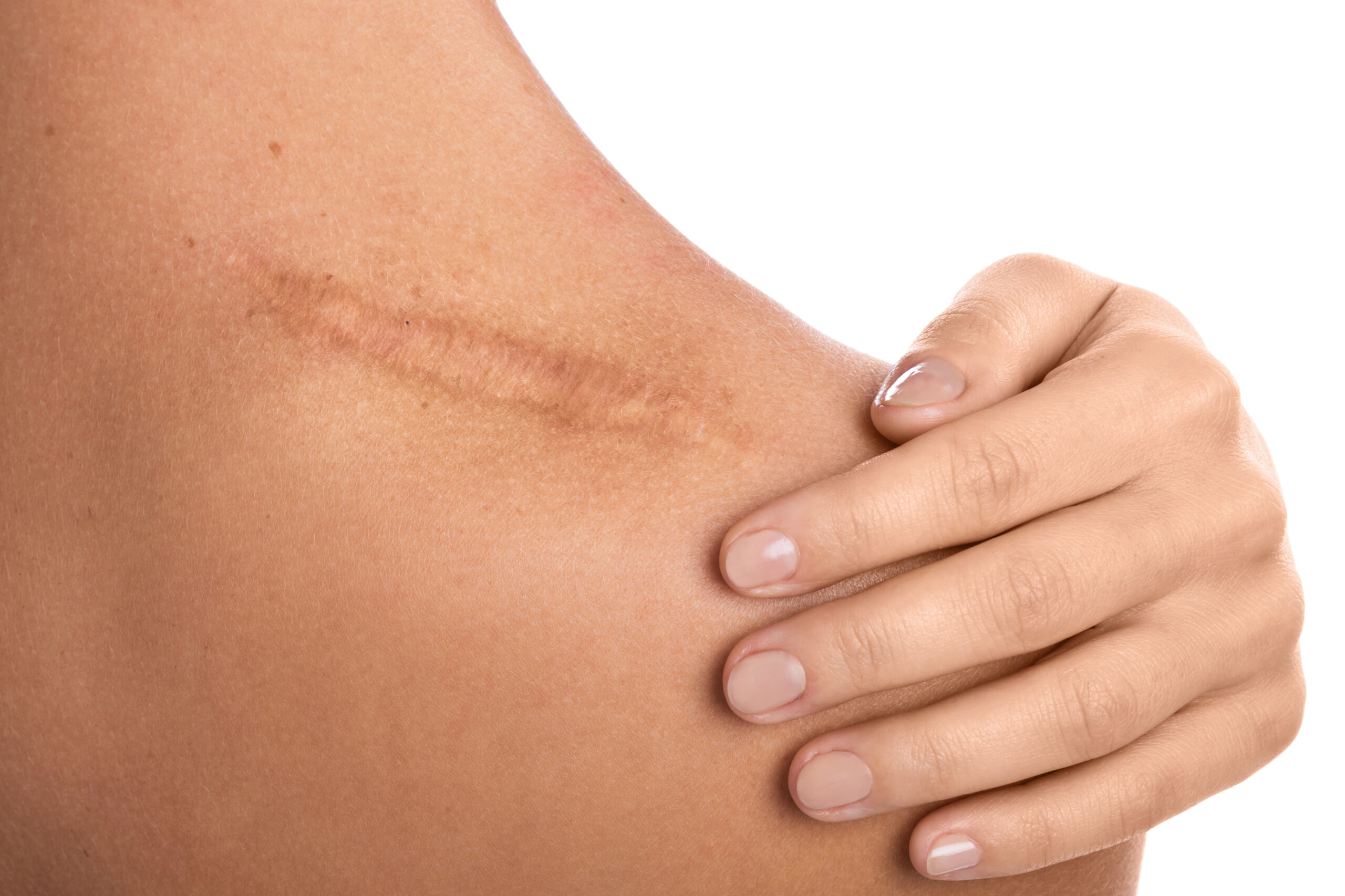
Proper Wound Care Can Prevent Scarring
Our board-certified dermatologists in Jupiter have many ways to minimize scars from injuries. But the best approach is to prevent scarring in the first place.
As the American Academy of Dermatology (AAD) reminds us, “The appearance of a scar often depends on how well the wound heals. While scars from surgery or over joints like the knees and elbows are hard to avoid, scars caused by minor cuts and scrapes can become less noticeable by properly treating the wound at home.”
Scott Hultman, a plastic surgeon who is director of Johns Hopkins’ Burn Center and also part of the Scar Revision Clinic team, says that scarring from minor skin injuries can be reduced, but it largely depends on the type of injury.
“Scarring can come from cuts—these are the most common injuries. But scars are more likely in injuries where the skin is not just cut but also crushed or otherwise damaged. Clean cuts can heal very well if they’re washed out and treated to avoid infection.”
The birth of a scar
Any injury to the dermis—the lower level of skin—will result in scarring.
Scars come in many forms, from indentations on the skin to flat, pale areas, to reddish, raised lumps.
Regardless of their appearance, they are the skin’s attempt to repair itself when it’s been damaged. The body weaves collagen fibers (a protein) across the injured area in an attempt to close up the opening caused by the wound.
Unfortunately, the body may produce either too much collagen, leaving a raised area, or too little, leaving a sunken appearance. The latter is most likely to happen when other types of skin tissue, such as muscle or fat, are also lost in the injury.
Lasting scars are most likely to occur when the injury occurs to a joint, like the knee or elbow. The frequent flexing of these joints stretches the injured tissue, which in turn makes it harder for it to heal.
Help your skin to prevent scarring
Here’s what we recommend to help your skin repair itself without leaving a more visible scar.
1. Cleanliness is key
Always keep the injury clean. Wash the area gently with mild soap and water to remove germs and debris. Bacteria or debris can cause infection, which will encourage scar formation.
2. Moisture reduces scarring
To help the skin repair itself, petroleum jelly will help prevent the wound from drying out and forming a scab. Wounds with scabs take longer to heal.
3. Cover up
An adhesive bandage will also help keep the wound from drying out, as well as keeping out dirt and germs. If your skin is sensitive to adhesives, use a non-adhesive gauze pad secured in place with paper tape. For larger scrapes, sores, burns, or persistent redness, try hydrogel or silicone gel sheets.
4. Change the bandage often
It’s important to change the bandage daily to keep the wound clean while it heals.
5. Don’t pick at it
Scabs are the body’s own adhesive bandage. Allow them to fall off by themselves. If you scratch or pick at a scab, you’ll trigger inflammation, which will just create a larger scar.
When to get help
First-degree burns can usually be treated at home if they’re less than about three inches in diameter and not on the hands, face, feet, groin, buttocks, or a major joint. More serious burns should be treated at the ER. When in doubt, it’s better to have it checked medically, as a burn can become a serious injury without proper treatment.
Any type of bite wound, from either human or animal, carries the risk of introducing harmful bacteria, so be sure to receive medical attention for bites that break the skin.
Deep puncture wounds or those that continue to bleed should be treated at the ER.
If you experience severe pain and fever after any wound, go to an emergency room as soon as possible.
If you’re not able to prevent any scarring, be sure to contact us. Although no scar can be removed completely, we have a number of ways to reduce or minimize scarring, from laser resurfacing and microdermabrasion to filler injections and microneedling.

